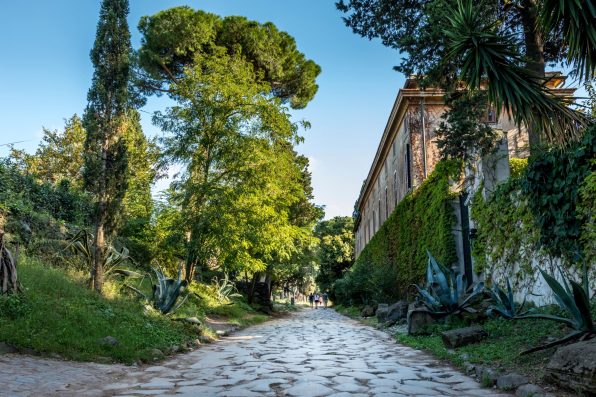Construction Workers Recently Discovered A Life-Sized Marble Statue Of A Man Dressed As Hercules While Repairing A Sewer Line In Rome

During efforts to repair a damaged 100-year-old sewer line in Rome, construction workers unearthed a life-sized marble statue of a man dressed as Hercules, the divine hero famous for his feats of strength in classical mythology.
The stunning discovery was made along Appian Way, a historic road that was once used by ancient Romans as a main route for transporting military supplies. It was one of the earliest and most important roads of its day. Now, the road lies beneath the city’s Scott Park.
Workers had been on site to clean and renovate an old pipeline, as it was causing dangerous sinkholes to appear throughout the park. After the sewers had been restored, trees were to be replanted in the area.
The site had been undergoing construction for months when the sculpture was found. Before then, no other archaeological discoveries had been made.
However, it is not surprising that a historical artifact was uncovered, considering the proximity of the park to some of the city’s most iconic landmarks.
A 27-year-old archaeologist named Federica Acierno led the initial study of the statue. The statue’s arms were disconnected from its body, and both of the legs were broken. Further excavation revealed the base of the statue with its feet still attached to the platform.
The sculpture seemed to have been buried beneath Scott Park intentionally during the 20th century when the sewer pipe was being built. It was approximately 65 feet below the ground.
Since the sculpture was not found at the site where it was originally mounted, the surrounding soil won’t be any help in figuring out its age.
Due to the lion skin headdress and club featured on the figure, archaeologists believe that it was made in the likeness of Hercules.

Martina – stock.adobe.com – illustrative purposes only
However, they have also hypothesized that the statue may be a depiction of Emperor Gaius Messius Quintus Traianus Decius, also known as Decio Traiano, who reigned from 249 to 251 C.E.
When they compared the statue to coins and other official portraits bearing the ruler’s face, they determined that the artifacts shared the same physical trait of wrinkles on his face. The wrinkles were meant to represent concern for the fate of the empire.
The statue will soon be displayed in one of the exhibitions of the Appia Antica Archaeological Park.
Sign up for Chip Chick’s newsletter and get stories like this delivered to your inbox.
More About:News





